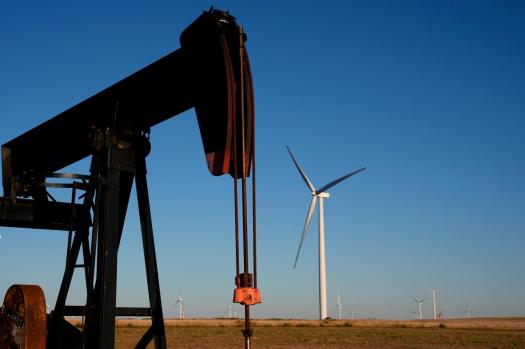By ALEXA ST. JOHN
A comprehensive package of tax and spending cutbacks was passed by Congress.That cuts billions of dollars in renewable energy spending on Thursday. This implies that the cost of household solar, energy efficiency, and other green technology will increase significantly, making the country’s efforts to combat climate change even more difficult.
The law that is awaiting President Donald Trump’s signature encourages the extraction, drilling, and production of the gas, coal, and oil that are mostly responsible for global warming and the resulting extreme weather that is becoming more and more expensive and deadly. These fossil fuels’ production and combustion also contribute to air pollution and health issues for people.
The bill also reduces tax credits for renewable energy sources like solar and wind. Numerous projects will probably be postponed or cancelled as a result, impacting thousands of jobs and raising home energy bills.
Four points to consider regarding the bill’s implications for clean energy are as follows:
Tax credits for home improvements and systems, such as solar and batteries, that save homeowners money over time and drastically reduce greenhouse gas emissions were part of the climate bill passed during the administration of former President Joe Biden.
Even though the cost of these systems has decreased over time, some homeowners would still find it difficult to cover the high upfront costs without the credits. Nearly a third of the cost of an ordinary rooftop solar installation, which can reach $20,000. Typically, a heat pump costs several thousand dollars; the tax credit covered up to $2,000, or 30% of the cost.
In tax year 2023, over 2 million families claimed over $2 billion of the credit for improvements like windows, insulation, and heating and cooling systems, according to the U.S. Treasury Department. In the same year, almost 1.2 million homes applied for more than $6 billion in the credit for improvements such as solar water heating, geothermal heat pumps, solar systems, and battery storage.
At the end of this year, the measure terminates both tax advantages.
According to Steven Nadel, executive director of the American Council for an Energy-Efficient Economy, a nonprofit organization that promotes reducing energy waste, no one requested that Congress raise their energy bills even further. Families and companies would pay more each month if incentives for energy-saving upgrades were removed.
However, the move was praised by Republican lawmakers. Senate Finance Committee chairman and Republican Senator Mike Crapo of Idaho said it will save taxpayers money and help unleash American energy.
“The best way to restore economic prosperity and opportunity for all Americans is to extend good tax policy, deliver targeted relief, and rein in wasteful spending,” he stated.
Credits of up to $4,000 for buyers of used EVs and up to $7,500 for buyers of new EVs are eliminated by the bill.
That will probably hinder the development of a technology that is seen to be essential to reducing a major contributor to global warming. The Environmental Protection Agency estimates that in 2022, transportation will account for 28% of all greenhouse gas emissions in the United States.
According to Motorintelligence.com, EV sales have increased consistently and accounted for roughly 8% of all new car sales in the United States last year. By 2030, Biden aimed to have 50% of all new cars sold in the US be electric.
However, without a credit, consumers can find it more difficult to accept that transaction. According to Kelley Blue Book, the average price of new cars sold in May was $48,799, while EVs sold for an average of $57,734.
After September 30, the credits are removed.
The measure expedites the deadlines for large-scale solar and wind projects to be eligible for a tax credit. Massive projects from Colorado to Texas to Arizona are at risk because, according to the industry, many projects will not be able to fulfill that expedited schedules.
For wind and solar projects that begin construction within a year of the law’s passage, the bill permits a full tax credit. However, in order to receive a credit, projects that start more than a year after the bill’s adoption must be operational by the end of 2027.
Related Articles
-
Supreme Court clears way for deportation to South Sudan of several immigrants with no ties there
-
Takeaways as Congress sends tax and spending cuts bill to Trump s desk
-
EPA puts on leave 139 employees who spoke out against policies under Trump
-
Medicaid, food aid recipients worry about safety net cuts in bill sent to Trump
-
What s in Trump s big bill that passed Congress and will soon become law
According to policy firm Atlas Public Policy, building has not yet started on over 28 gigawatts of wind and solar projects that are expected to be operational after the beginning of 2028. They are unlikely to be eligible for a credit under the bill.
According to the U.S. Energy Information Administration, wind accounts for around 10% of the nation’s power generation, with a goal of 20% by 2030. At one point, the industry’s goal was to reach 30% by the end of the decade, and solar is currently at roughly 4%.
Wind and solar are essential to the country’s renewable energy goals, according to clean energy proponents, developers, and investors, and tax credits help make them feasible. The Paris pact, however, requires signatories to work toward preventing global temperatures from rising by 1.5 degrees Celsius (2.7 degrees Fahrenheit) beyond pre-industrial levels. Trump has pulled the United States out of this pact.
Rather, the measure favors nuclear power and conventional fossil fuels including coal, oil, and natural gas. Since the sun doesn’t always shine and the wind doesn’t constantly blow, proponents claim it will boost reliability.
Sen. Shelley Moore Capito, R-W.Va., praised the package, saying that Americans need inexpensive, dependable energy, needless spending must be reduced, and our nation must be able to rebuild.
Others, however, predict that utility rates would rise for Americans. That is undesirable news at a time when climate change is causing more regular extreme weather events and when the country’s data center boom, driven by the need for artificial intelligence, is increasing energy consumption.
According to energy and nonpartisan organizations, if the law is passed, average annual electricity bills might rise by over $100 per household by the following year. Some states may see increases of more than $200 if fewer wind and solar installations are put to the grid since there is less incentive and it is too costly for developers to do so without credits.
According to Lori Lodes, executive director of the climate action advocacy group Climate Power, this measure would increase expenses, impair grid reliability, and increase the United States’ reliance on foreign oil at a time when energy demand is rising and households are already having difficulty making ends meet. It poses a threat to our power supply at a time when the grid is experiencing unprecedented strain due to harsh weather and high demand, resulting in nationwide brownouts and blackouts.
Project plans may not be affected right once by the absence of tax benefits. However, greater uncertainty makes maintaining national security and investing in cutting-edge new technologies more challenging.
Climate reporter Alexa St. John works for the Associated Press. X:@alexa_stjohn is her X account. Her email address is [email protected].
Visit http://www.apnews.com/climate-and-environment to learn more about AP’s coverage of the climate.
Several private foundations provide funding for the Associated Press’s coverage of the environment and climate. All content is the exclusive responsibility of AP. Visit AP.org to find funded coverage areas, a list of supporters, and AP rules for dealing with philanthropies.












